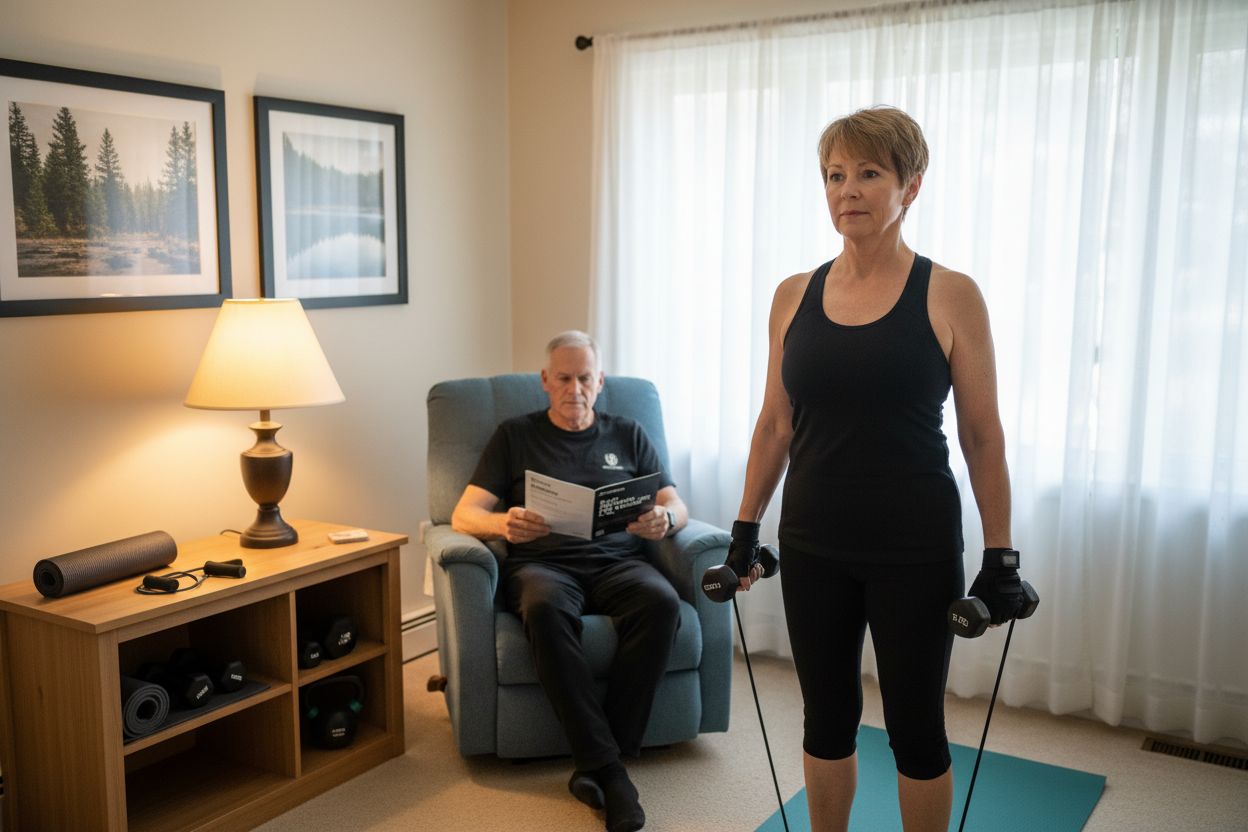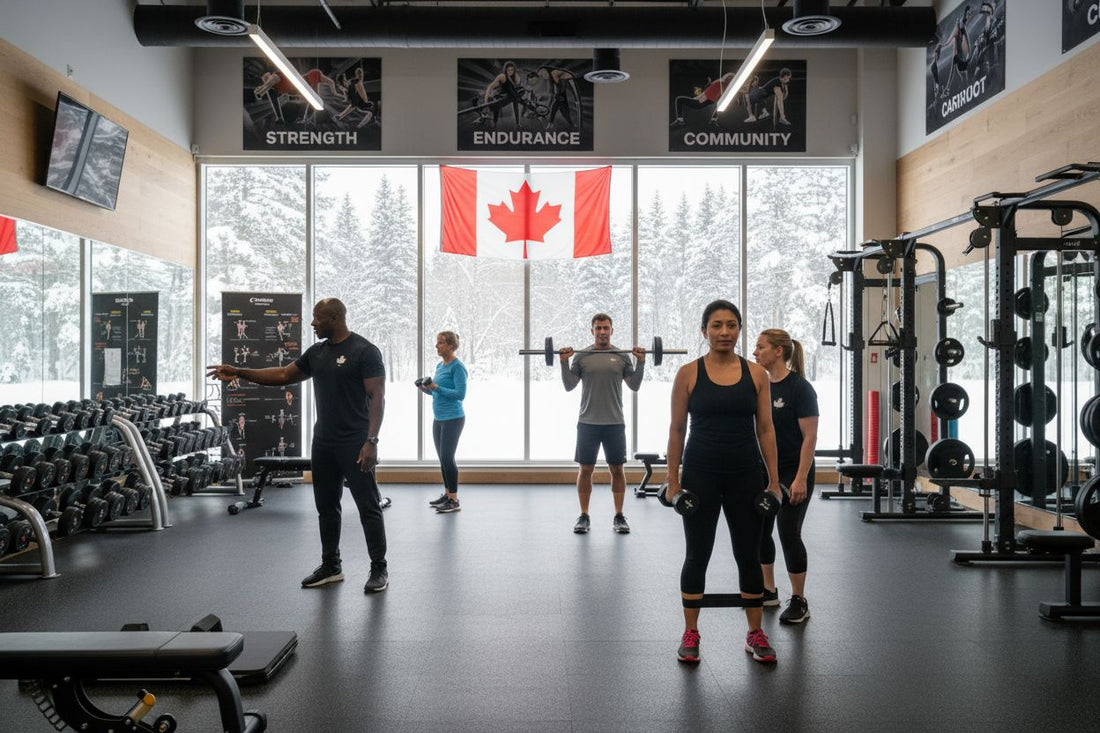More than 60 percent of adults over 40 are not meeting national strength training guidelines, placing themselves at greater risk for muscle loss and reduced mobility. Building strength after 40 is about more than lifting weights, it is a way to preserve independence, support health goals, and boost energy. With a few smart steps, you can create a training routine tailored to your needs and stay strong for the years ahead.
Quick Summary
| Key Point | Explanation |
|---|---|
| 1. Assess your fitness needs first | A thorough health check and self-assessment help tailor a safe strength training program. |
| 2. Choose the right equipment | Select equipment that suits your fitness level, comfort, and any health limitations you have. |
| 3. Design a balanced training schedule | Incorporate strength training and aerobic activity into a weekly plan to promote overall fitness. |
| 4. Always include warm-ups and cool-downs | Proper warm-up and cool-down routines prevent injuries and enhance workout effectiveness. |
| 5. Track progress to stay motivated | Monitor your training results and adjust routines based on your body’s response for continued improvement. |
Table of Contents
- Step 1: Assess Your Current Fitness And Health Needs
- Step 2: Select Appropriate Strength Training Equipment
- Step 3: Design A Safe And Effective Training Schedule
- Step 4: Incorporate Proper Warm-Up And Cool-Down Techniques
- Step 5: Monitor Progress And Adjust Your Routine
Step 1: Assess Your Current Fitness and Health Needs
Before launching into strength training, you need a clear snapshot of your current health and fitness baseline. This assessment will help you design a safe, personalized approach that matches your body’s unique needs.
Start by scheduling a comprehensive medical checkup with your healthcare provider. During this visit, discuss your intentions to begin strength training and request a thorough physical evaluation. According to Canada’s national physical activity guidelines, adults aged 40 and above should understand their current activity levels and potential limitations before starting a new exercise program.
Next, perform a self assessment across several key areas:
- Physical Mobility: Can you comfortably perform basic movements like squatting, lifting arms overhead, or standing from a seated position?
- Current Activity Level: Track your weekly physical activities and compare them against the national recommendation of 150 minutes of moderate to vigorous aerobic activity.
- Existing Health Conditions: Note any chronic conditions like arthritis, previous injuries, or metabolic concerns that might impact your training.
Pro Tip: Consider working with a certified fitness professional who specializes in training mature adults. They can provide a professional functional fitness assessment and help design a customized program.
A Canadian longitudinal study highlighted that older adults who engage in proper strength training experience significant benefits including improved balance, mobility, and overall perceived health. Your initial assessment is not about judgment but about creating a smart, personalized roadmap to healthier aging.
Once you complete your health evaluation, you will be ready to move forward with confidence and create a strength training plan tailored specifically to your body’s current capabilities and future potential.
Step 2: Select Appropriate Strength Training Equipment
Choosing the right strength training equipment is crucial for creating an effective and safe workout routine. Your goal is to find tools that match your fitness level, physical capabilities, and personal comfort.
According to Alberta Health Services, you have multiple equipment options to consider. Body-weight exercises offer an excellent starting point requiring zero financial investment. They allow you to understand your body’s movement patterns and build foundational strength using nothing more than your own weight.
Resistance equipment provides fantastic versatility for mature adults. BC Women’s Health suggests several accessible options:
- Resistance bands: Lightweight, portable, and gentle on joints
- Free weights: Dumbbells and kettlebells for progressive strength training
- Weight machines: Provide structured movements with added stability
- Group fitness classes: Offer guided strength training with professional supervision
Pro Tip: Start with lighter weights and focus on proper form. Quality matters more than quantity when building strength after 40.
When selecting equipment, consider these practical factors:
- Comfort and ease of use
- Storage requirements in your home
- Budget constraints
- Physical limitations or existing health conditions
By thoughtfully selecting equipment that suits your individual needs, you are setting yourself up for a successful strength training journey.
 The next step involves learning proper technique and creating a structured workout plan that keeps you motivated and progressing safely.
The next step involves learning proper technique and creating a structured workout plan that keeps you motivated and progressing safely.
Here’s a comparison of common strength training equipment options:
| Equipment Type | Benefits | Considerations |
|---|---|---|
| Resistance Bands | Lightweight Joint-friendly |
Low cost Limited resistance |
| Free Weights | Versatile Progressive load |
Need storage Form is crucial |
| Weight Machines | Stable Supports alignment |
Expensive Less portable |
| Body-weight | No equipment needed Accessible |
May lack challenge Requires creativity |
| Group Classes | Professional guidance Motivating |
Class schedules Cost varies |
Step 3: Design a Safe and Effective Training Schedule
Creating a strength training schedule that keeps you motivated, safe, and progressively challenged is key to long-term fitness success. Your goal is to develop a realistic plan that fits your lifestyle while meeting national health recommendations.
According to the Canadian Society for Exercise Physiology, adults over 40 should aim for at least 150 minutes of aerobic activity weekly and incorporate strength training at least twice per week. This means strategically planning workouts that balance muscle building with overall fitness and recovery.
Start by mapping out a weekly schedule that includes:
- Two dedicated strength training sessions
- Alternate muscle groups to allow proper recovery
- Short 10 minute exercise blocks that can be combined
- Flexibility for rest and adaptation
Research from Canadian health guidelines emphasizes the importance of including balance activities for older adults. This means your schedule should not just focus on building muscle but also improving overall functional movement and stability.
Pro Tip: Listen to your body. Some weeks you might need more rest or modification and that is perfectly normal.
A sample weekly schedule could look like this:
- Monday: Upper body strength training
- Tuesday: Light cardio or walking
- Wednesday: Lower body strength training
- Thursday: Rest or gentle stretching
- Friday: Full body functional movement
- Saturday: Balance and mobility work
- Sunday: Complete rest and recovery
By designing a thoughtful and flexible schedule, you create a sustainable path to strength and wellness. Your next step involves learning proper exercise techniques to maximize results and minimize injury risk.
Step 4: Incorporate Proper Warm-Up and Cool-Down Techniques
Preparing your body for strength training and helping it recover afterward are critical components of a safe and effective workout routine. Your warm-up and cool-down sequences can make the difference between an injury-free experience and potential strain.
A proper warm-up gradually increases your body temperature and prepares your muscles and joints for more intense activity. Think of it like gently waking up your body instead of jolting it into high gear. Start with 5 to 10 minutes of light movement that mimics the exercises you will perform.
Your warm-up routine should include:
- Dynamic stretching movements
- Light cardiovascular activity like walking or marching in place
- Gentle joint rotations for shoulders, ankles, and hips
- Controlled body weight movements
Cool-down techniques are equally important for muscle recovery and reducing post-workout stiffness. These sequences help transition your body from high-intensity work back to a resting state while promoting flexibility and reducing muscle tension.
Pro Tip: Never skip your warm-up or cool-down. These sequences are not optional extras but essential parts of a complete workout.
A solid cool-down should involve:
- Static stretching for major muscle groups
- Deep breathing exercises
- Gentle walking or slow movement
- Light muscle compression or foam rolling
By dedicating time to proper warm-up and cool-down techniques, you protect your body from potential injuries and enhance overall workout effectiveness. Your next step involves learning specific exercises that will help you build strength safely and consistently.
Step 5: Monitor Progress and Adjust Your Routine
Tracking your strength training journey is not about perfection but understanding how your body responds and adapts to your new fitness routine. The Canadian Longitudinal Study on Aging highlights that consistent monitoring can reveal significant improvements in functional health and overall well-being.
Start by establishing baseline measurements before you begin your strength training program. These initial assessments will serve as your personal benchmark for future progress. Consider tracking:
- Body measurements
- Weight
- Strength levels for key exercises
- Energy levels and overall mobility
- Resting heart rate
- Sleep quality
National health surveillance data suggests that regular tracking helps increase adherence to strength and balance guidelines. Create a simple journal or use a smartphone app to record your workouts, noting:
- Exercises performed
- Weight or resistance used
- Number of repetitions and sets
- How you felt during and after the workout
- Any physical changes or improvements
Pro Tip: Take progress photos every 4 to 6 weeks. Sometimes visual changes are more motivating than number measurements.
Adjust your routine based on these observations. If you are not seeing progress or feeling excessive fatigue, it might be time to modify your approach. This could mean:
- Changing exercise intensity
- Introducing new movements
- Allowing more recovery time
- Consulting a fitness professional
Remember that progress is not linear. Some weeks you will feel stronger, while others might feel more challenging. Your willingness to listen to your body and make thoughtful adjustments is the key to long-term success. Stay patient and consistent.
Ready to Strengthen Your Future? Start Strong With Solutions Tailored for Canadians 40+
Taking your first steps into strength training after 40 is easier when you have the right support. You have learned how crucial it is to assess your baseline, choose suitable equipment, and build a safe routine. But starting from scratch can be overwhelming. Maybe you worry about finding equipment that really fits your needs or selecting products that support Canadian health guidelines. Your journey toward better mobility, balance, and healthy aging deserves a trusted partner.

Discover smart solutions designed just for you at Real Healthy Haven. Find high-quality resistance bands, comfortable activewear, and fitness monitors curated for Canadian adults over 40. Enjoy free nationwide shipping and gain confidence knowing our entire wellness range is built to help you achieve your fitness goals naturally. Visit Real Healthy Haven now and take the next step toward a stronger, healthier you. Start building your personalized strength training toolkit today and feel the difference in every move.
Frequently Asked Questions
How can I assess my current fitness level before starting strength training?
Start by scheduling a comprehensive medical checkup to discuss your intentions for strength training. Then, evaluate your physical mobility, current activity level, and any existing health conditions to create a personalized training plan.
What types of strength training equipment should I start with?
Begin with body-weight exercises, as they require no financial investment and help build foundational strength. As you progress, consider using resistance bands, free weights, or weight machines based on your comfort and physical capabilities.
How often should I train each week to effectively build strength?
Aim for at least two strength training sessions per week while incorporating a total of 150 minutes of aerobic activity. Create a balanced schedule that alternates muscle groups and includes rest days for optimal recovery.
What warm-up exercises should I include before strength training?
Include 5 to 10 minutes of light movement that mimics your workout, such as dynamic stretching and gentle joint rotations. This helps prepare your muscles and joints for more intense activity, reducing the risk of injury.
How can I monitor my progress in strength training?
Track your strength training journey by recording initial baseline measurements, such as body measurements and strength levels. Use a simple journal or app to log workouts and note any changes, aiming to adjust your routine every 4 to 6 weeks based on your observations.
What should I do if I’m not seeing progress in my strength training?
If you’re not experiencing progress, consider adjusting the intensity of your workouts, introducing new exercises, or allowing more recovery time. Regularly consult your records to identify patterns and make necessary modifications to optimize your training routine.



